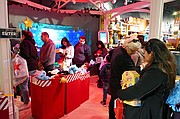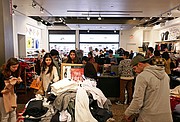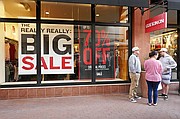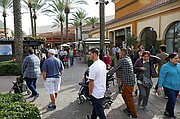RETAIL
Forecasts Say Holiday Business Ranged from Solid to Good
Holiday 2016 shopping has wrapped up, and business forecasts are rolling in for the crucial shopping season, which comprises 20 percent of total retail industry sales, according to the Washington, D.C.–headquartered National Retail Federation.
The NRF won’t release its results until Jan. 13, but the trade group initially forecast a 3.6 percent increase in retail sales for holiday 2016, a slight uptick from 2015, when holiday sales increased 3.2 percent, but falling short of 2014, when sales increased 4.1 percent.
According to the International Council of Shopping Centers , consumers splurged throughout the holiday season, which spanned the months of December and November. Holiday spending increased 16 percent, according to the trade group’s Post-Holiday Shopping Survey, which was released on Jan. 3. Consumers spent an average of $711 on gifts and holiday-related items. The 2016 results were 4 percent higher than what the surveyed consumers intended to buy, according to an ICSC survey taken earlier in the year. This year’s spending also increased over last year, when consumers spent an average of $611 on holiday gifts and related items.
The upbeat survey found that consumer goods were only part of the total story of the 2016 holiday. Consumers also opened their wallets for dining, movies and other entertainments. Experiences accounted for 20 percent of total consumer spending, according to the ICSC. Omni-channel retailers scooped up the most market share; 69 percent of shoppers spent money at retailers that run both e-commerce stores and bricks-and-mortar shops.
According to Boston-area market-research group Retail Metrics, spending for the holiday 2016 retail season is forecast to have increased 4 percent. But the forecast, released Jan. 3, also noted that the recent holiday season was one that gave a lot of mixed messages.
The economic support for holiday shopping was stronger than it has been in years. Unemployment has been low—under 5 percent—gas was relatively cheap and weather was cold. The chilly temperatures were thought to encourage consumers to go to stores to buy sweaters and jackets.
Cold weather conditions pushed demand for outerwear, according to Planalytics Inc., which said that sales for jackets and winter clothes reached $309 million on the East Coast during December.
But mall traffic was reported to have declined during the season, and Perkins did not forecast holiday earnings for most traditional retailers to be robust.
The reason for the mixed performance is rooted in an acceleration of recent spending trends. E-commerce spending skyrocketed during the 2016 retail season. It increased 13 percent by mid-December, according to e-market research group comScore. Shopping by desktop computer has steadily climbed in the last decade and has taken market share from traditional retailers.
Consumers also continued to spend more on restaurants and experiences rather than consumer goods, Perkins said, which caused further struggle for traditional retailers during the holidays.
Forecasts for the 2016 holiday season began in October, when the NRF issued its forecast that holiday sales would rise 3.6 percent to $655.8 billion. The pace of holiday business was jagged. It surged a few days before Christmas, according to the ICSC. More than half of shoppers, 51 percent, waited until a few days before Christmas to shop. The weeks before Christmas gave many businesses the blues, according to The NPD Group, headquartered in Port Washington, N.Y.
According to the market-research group, sales in the season’s seventh week were 11 percent lower in a year-over-year comparison with the same week of the 2015 season. When the sales for the first seven weeks of the 2016 season were measured together, they were 4 percent below the first seven weeks of the 2015 holiday season.
During the lull before Christmas, sales declined for the traditional gift categories of apparel, toys, technology, athletic footwear and prestige fragrances, said Marshal Cohen, NPD’s chief industry analyst. Discounts and promotions did not help the bottom line of many retailers. “Discounts have been too readily available this holiday season to offset declines compared to last year,” Cohen said. “Retailers are trying to compete across all channels with the same merchandise, so price becomes the focus. The level of discounting in play this holiday season is making it a challenge to capture the volume seen last year.”
During the 2016 holiday season, shopping centers brimmed with generous discounts, which spanned from 10 percent off to the off-price territory of beyond 60 percent off. On Christmas Eve, The Gap was offering some goods at 50 percent off.
For its one-day sale after Christmas Day, Macy’s offered suits that were discounted by 60 percent to 70 percent.


























